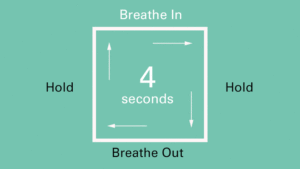5 Grounding Techniques- Navigating Anxiety in the Real World
In an ideal world, anxiety would be a figment of our imagination. We wouldn’t know what it feels like to be shaking in fear, or sick to our stomachs with worry. Anxiety would be a distant memory, fear would be a thing of fairy tales, and worry would be a wonder.
Yet, unfortunately, we live in a world riddled with anxiety. A world that is more conducive to creating anxiety rather than minimizing it. Whatever causes your anxiety, you know that it often comes up at inconvenient times. And the world doesn’t exactly stop for our anxiety to be dealt with — we must keep moving. We must go on with our day, we have to go to work, give the presentation, go to the meeting, pick up kids from school, make dinner, and carry on with so many other things in our lives. We don’t always have the luxury of really sitting with our anxiety and working through it in the moment, because anxiety doesn’t wait for your next therapy session. And because life doesn’t stop moving, I’m offering you 5 grounding exercises that may be able to bring you back to the center when you are feeling out of control but need to keep going.
You may have heard of a few of these before, but this post can serve as a reminder and a central location to find what works for you in the moment.
5-4-3-2-1 Method
The 5-4-3-2-1 method is helpful for those moments when you feel out of control. Maybe you feel a panic attack about to come on, and you need to orient yourself to time and place. The goal is to use all 5 of our senses to get grounded in the world around us. Start with identifying 5 objects that you can see, and if you are able, say them out loud. “Lamp, coffee cup, candle, plant, picture frame”. Next, identify 4 things that you can touch, and again, if you are able to say them out loud and physically touch these items, take a moment to hold them in your hand or let your hand rest on them. Then identify 3 things you can hear around you – be it a car driving by, the small talk of coworkers, the sound of a fan whirring, or anything else. If possible, say it out loud and take a moment to listen. Next, pick 2 things you can smell, then breathe deeply as you do to identify what they are. Finally, find 1 thing you can taste. Perhaps it’s a drink of water or a sip of coffee.
Now that you are grounded to the environment around you, I hope you feel a little more comfortable moving to the next task at hand.

Box Breathing
Box breathing grounds us by focusing on our breath rather than the anxious thoughts in our head. For box breathing, each breath will last for 4 seconds. If you can, use your finger to draw a box in the air as you breathe as a visual representation of what you’re doing.
First, if possible, sit with your feet flat on the ground. Take a deep breath for 4 seconds, hold the breath for 4 seconds, exhale for 4 seconds, and hold for 4 seconds. Do this for 4 cycles, or as much as you need before returning to the moment you’re in.

Quick Mindfulness
If you regularly turn to mindfulness practices, this next technique can be a great tool during moments of anxiety. If you don’t regularly practice mindfullness, you can try this quick mindfulness exercise as a grounding technique.
If you are able, stand with your feet flat on the floor. Take off your shoes if you’re comfortable with it. Close your eyes and focus your attention on your feet: how do they feel as they make contact with the floor? Now move to your legs. How do they feel? Are they tight? Loose? Stiff? Next focus on your stomach: how does that feel? Move up your body, thinking about every part until you get to the top of your head. Now in review, where do you feel the anxiety the most? Notice what parts of your body hold tension and tightness. Notice your breathing. You don’t need to change anything, just bring your attention to the different areas of your body. Notice how your body feels, what your breathing is like, and where your anxiety is held. And when you feel ready, slowly open your eyes, and re-engage with your everyday life.
Something to Hold
Sometimes, when we are feeling anxious, it can really benefit us to have something tactile in our hands. For some, this may be a fidget toy, a smooth stone, or something you carry with you to provide grounding in times of anxiety. For others, it may be holding a piece of ice or washing your hands for the cool sensation it provides. Finding what works for you can prove to be very beneficial. Having a tactile object can prove to be a quick method of grounding in moments of anxiety, especially when you are in a situation where you’re unable to do a mindfulness or breathing exercise. I wear a ring that my mother gave me, and I often find myself spinning it to remember where I am, and remember her strength. I encourage you to find whatever it is that works for you.
Take a Walk
Sometimes we need to simply get away and take a walk. This can be a walk outside, a walk around the office building, or a walk around your home. Regardless of where, physically getting up and moving your body can help us to ground ourselves in the world around us and reduce anxiety. On your walk, consider incorporating a few stretches, twists, or shakes. Do what feels good to you. As you walk, consider practicing one of the other grounding techniques listed, or some variation of one. Take deep breaths, and pay attention to how your body feels. Do what you can to focus on your physical environment and how your body feels in the moment. There is no need to judge your mind for returning to the anxiety; that’s natural. If your mind wanders towards the source of your anxiety, acknowledge and notice what this feels like, and gently navigate it back to your body.

